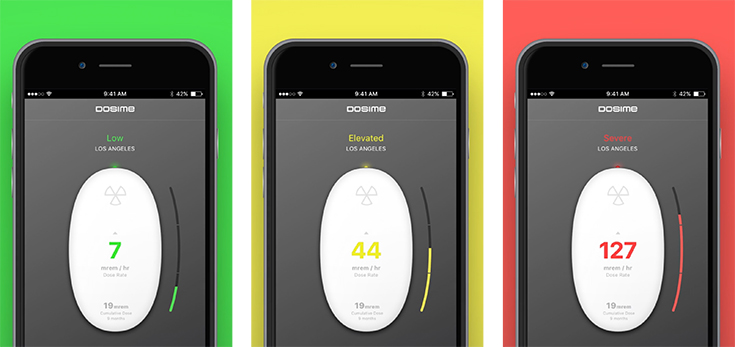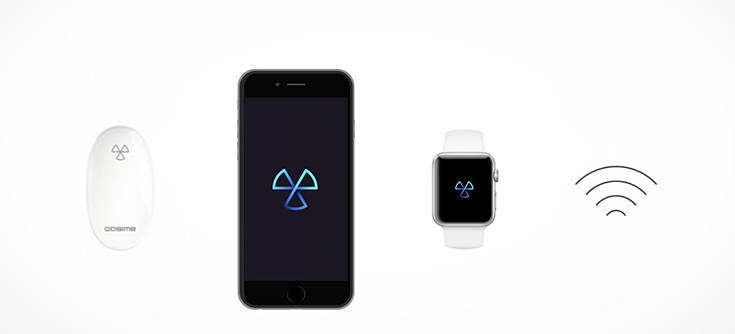Accessible radiation detection
Our R&D bloggers look at a portable dosimeter that could help to protect those who work in dangerous environments

(all images courtesy Dosime)
Radiation is constantly being emitted into the environment. There are two main types of radiation: non-ionizing and ionizing. Non-ionizing radiation includes visible light, microwaves and radio frequency. These waves do not have enough energy to bump an electron from an ion to ionize it, therefore its exposure is not dangerous. However, exposure to ionizing radiation, such as x-rays and gamma rays, can lead to DNA and tissue damage, posing serious health risks, such as cancer.
Using world-class radiation detection and data technology, the Dosime device measures ionizing radiation exposure and tracks it cumulatively over time. This device is compact; it can clip onto the user’s clothes or be mounted in a home or office similar to a fire detector or carbon monoxide detector. It scans the air every four seconds and by using a silicone diode, it can detect and measure radiation exposure. Similar technology is currently being utilised by nuclear power plants and NATO forces.

Dosime offers easy to interpret real-time data that is sent to the user’s smartphone via Bluetooth. It reports the radiation exposure in units of millirem (or mrem), a unit of absorbed radiation dose, per hour and also calculates the total radiation exposure in mrem units. In addition to data reporting, the device has the capability of providing colour coded alerts based on the levels of environmental radiation:
Green: Acceptable or safe level of exposure. Dose rate fluctuation between 0.005 mrem/hr and 0.030 mrem/hr is considered normal
Amber: risk of radiation exposure has significantly increased above a normal, naturally occurring rate. Dose rate is above 10mR/h and below 100 mR/h
Red: high risk of excessive radiation exposure. Dose rate is above 100mR/h
Firefighters, paramedics, police officers, and other first responders may be exposed to an array of environments with varying levels of radiation throughout their work. Being aware of their baseline radiation exposure could, therefore, be beneficial for their health. The device can also be used to assess an environment before exploring, building, or evaluating areas affected by radiation from nuclear power plants.
The device costs $250.00 and can found on Amazon and other websites. This device will hopefully prove quality of life and serve as a safeguard for those in potentially dangerous environments.
Zoe Mendrysa, Ian Bogdanowicz, Carly Esteves and Ian Portelli
Ian Bogdanowicz, 02/10/2017